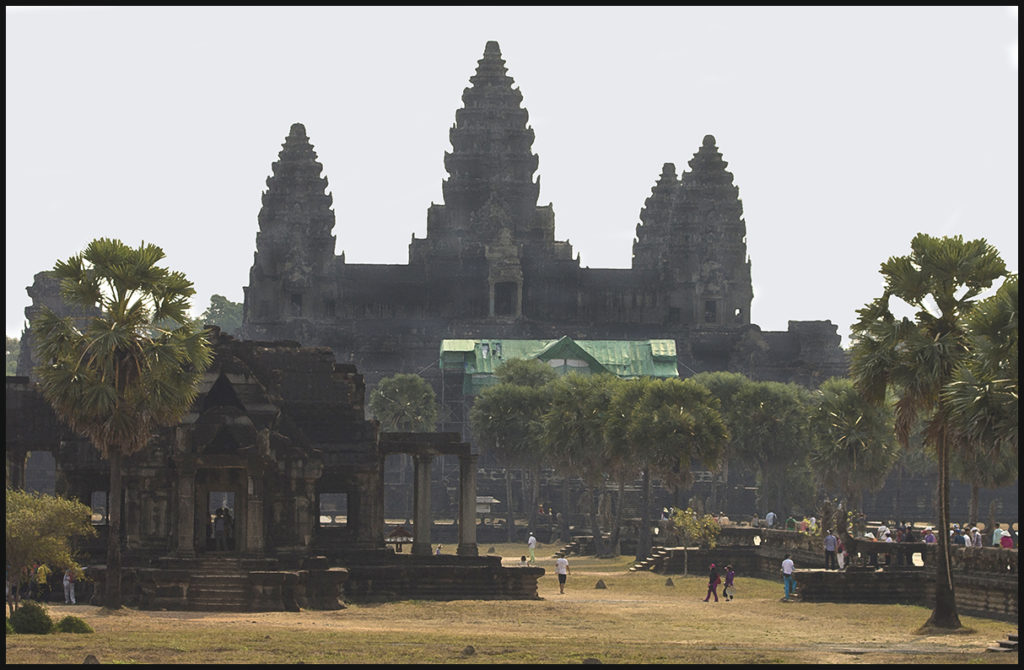
Iconic Angkor Wat. Germans were paying for upgrades to the facade.
Angkor Wat is deservedly a world heritage center visited by thousands from all over the world. It covers a huge area containing dozens of temples: some restored, some being restored, and some still over-grown with huge fig trees. Both its size and detail of the carvings are awesome, in the strictest sense of the word.
From the islands in Laos, plus the border crossing delay it takes an entire day and the better part of the night to get to Siem Reap, home of Angkor Wat. The bus drivers handled the paperwork at the border. After crossing into N. Cambodia the roads deteriorate further. It is even poorer than Laos.
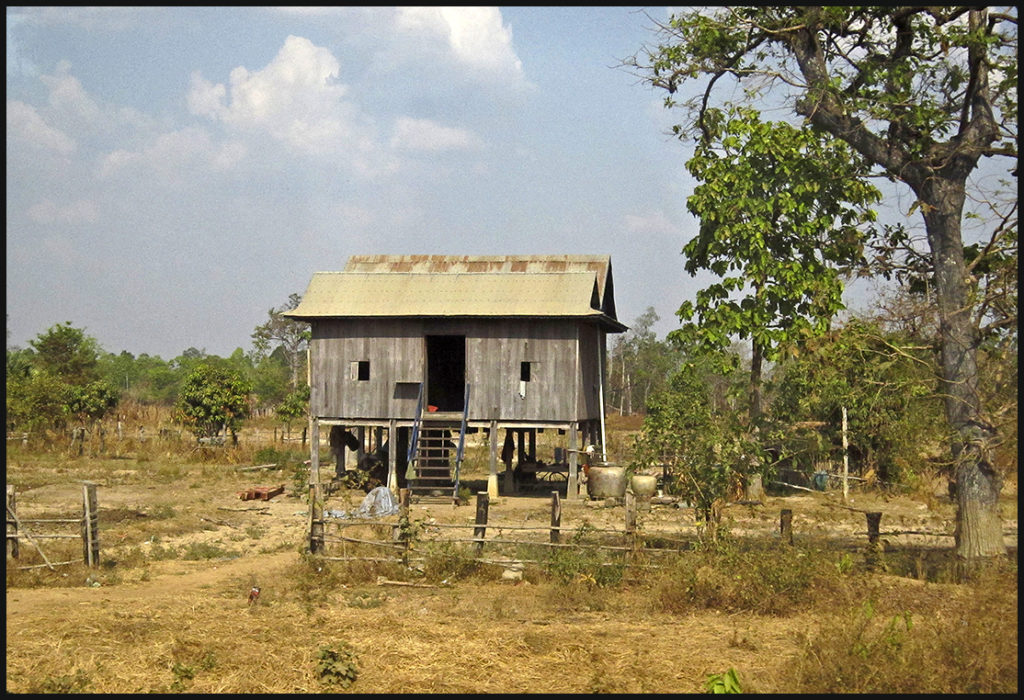
Typical house in the north.
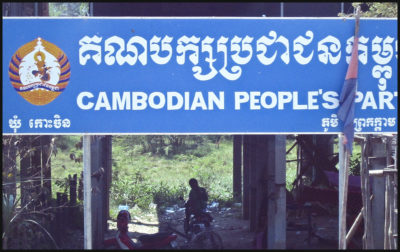
People’s communist party signs are frequent.
The bus stopped for lunch at a market where the choices are not choice. Finding something appealing to a western palette is a challenge. Perhaps you like your hard boiled egg with the fetal chicken inside? Or maybe a plate of fried grasshoppers with spices? Or a plate of grubs? Or some interesting dried fish, or cockleshells?
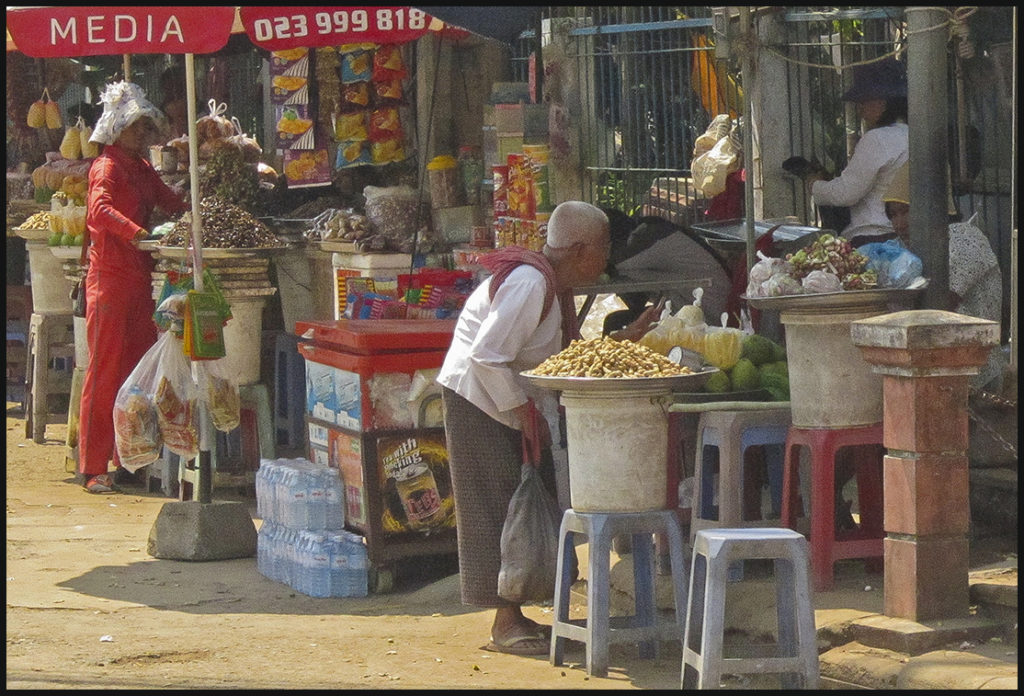
Typical marketplace in the Cambodian hinterlands.
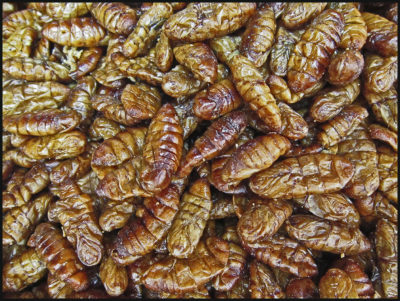
Fried grubs.
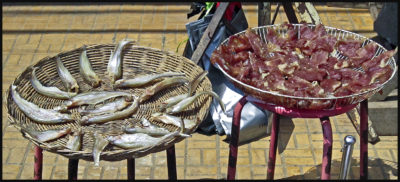
Dried fish on the street.
We arrived at midnight in Siem Reap during a power outage…which is a regular occurrence apparently. The town’s size has exploded since outsiders have been allowed into Cambodia, but their infrastructure hasn’t caught up.
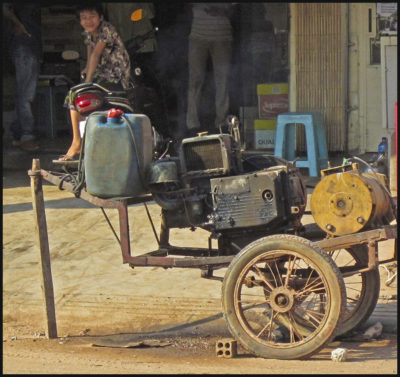
These street generators keep the lights on when the inevitable power failures happen.
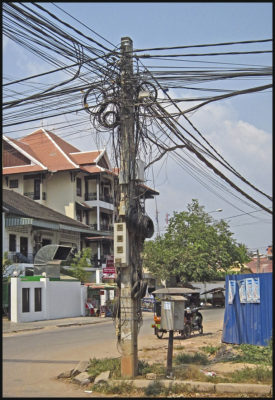
Part of the power problem.
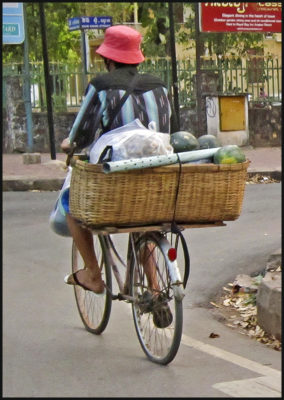
Grocery shopping.
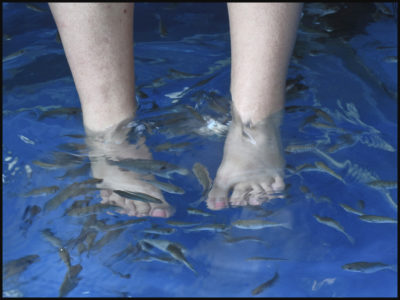
Popular pedicure involves nibbling fish.
The delightful, attentive and punctual Mr. Dina was our driver for several days. We were charmed. He took us anywhere we wanted to go for three days, at $15 per day while we explored Angkor Wat. While a hotel desk clerk makes $75/month working 7 days a week for 15 hour night shifts in Laos, these might look like decent wages to tuk-tuk drivers in Cambodia. Mr. Dyna was ecstatic over a $20 tip. In Siem Reap the ATM’s dispense American dollars. That is the desired currency.
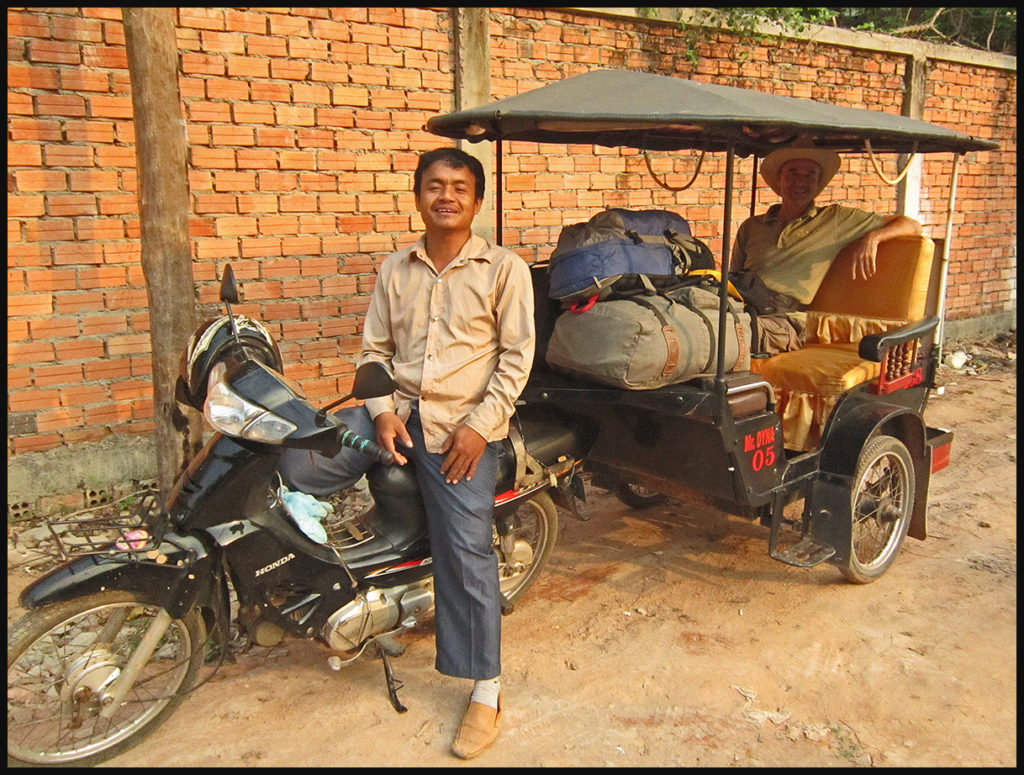
Mr. Dyna and his tuk-tuk.
Iconic Angkor Wat, surrounded by a moat is the world’s largest religious building. The enormity of the entire complex surprised us.
The 630 year Angkor Wat era lasted from 802 AD to 1432 at which point, invading Siamese made off with the artists, intellectuals, dancers and fighters. Thai culture still reverberates with the infusion of talent from that invasion.
The temples surviving are but a sacred skeleton of the original Khmer Rouge empire. Wooden residential buildings are long gone. The quality of design and craftsmanship is awe inspiring.
Hinduism was the religion of choice at the inception. Later, Mahayana Buddhism became the prevalent religion. Both influences are obvious in the temples. Today, most Cambodians favor the Theravada branch of Buddhism.
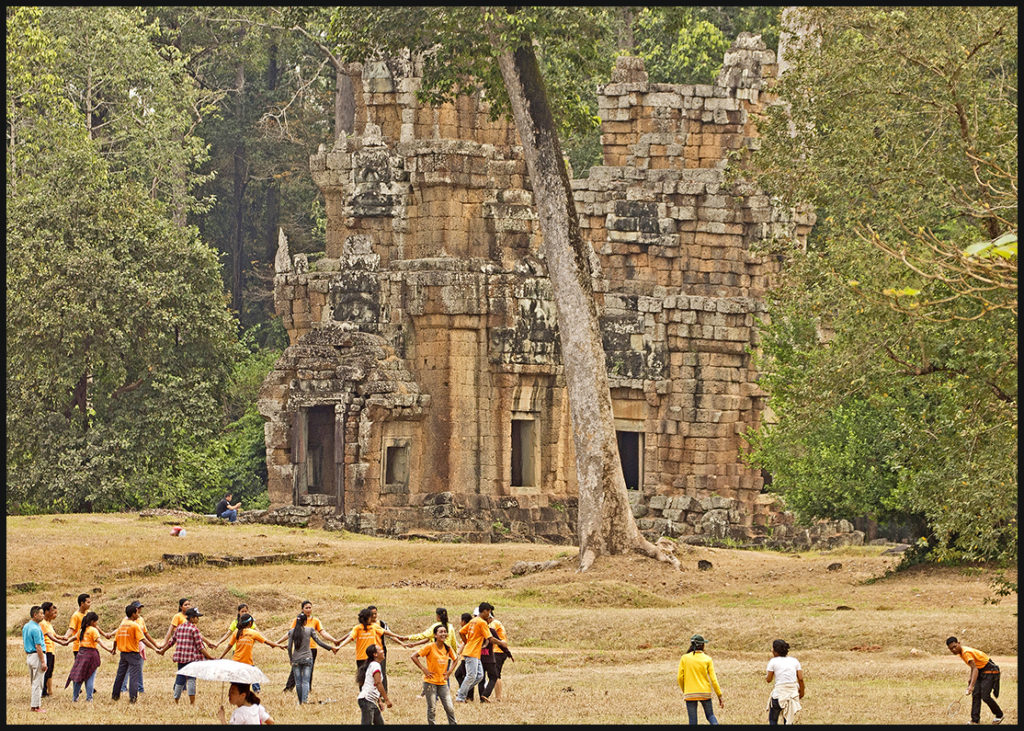
People enjoying the open fields amidst the ruins.
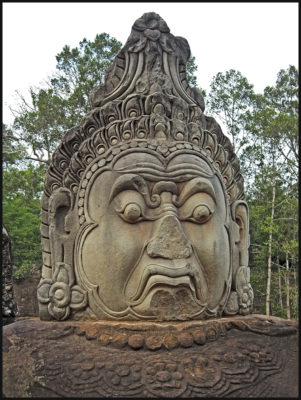
Individual faces are carved on hundreds of statues.
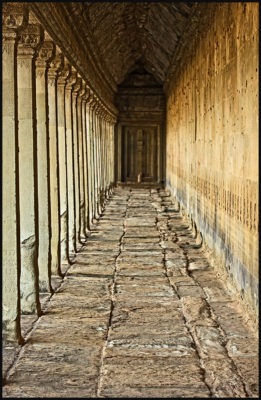
Hallway in the main temple.
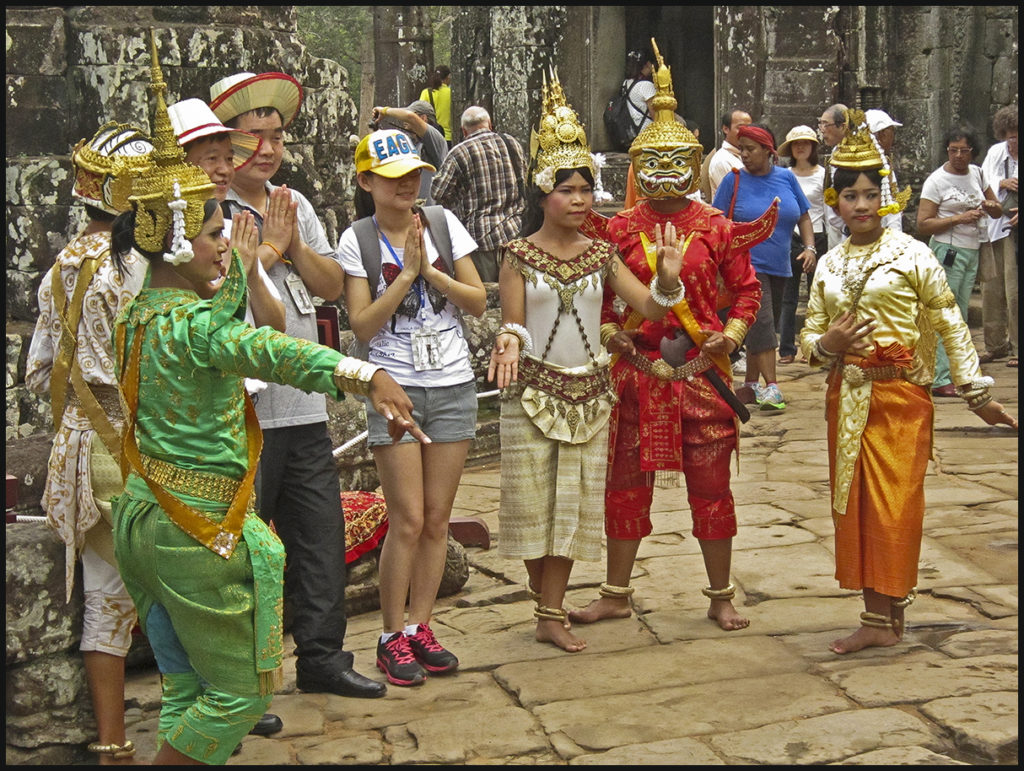
Costumed entertainers pose with tourists.
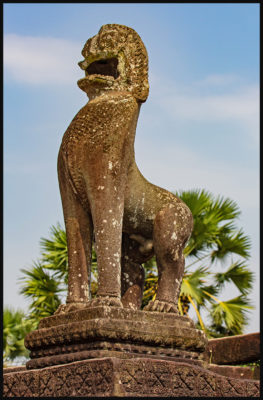
Carved lion.
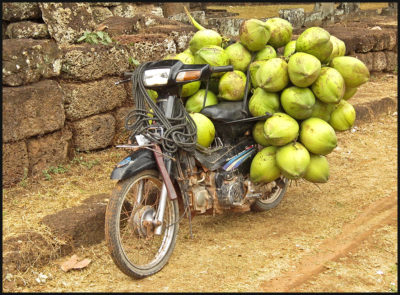
Coco transport between ruins.
Angkor Thom is a walled city encompassing 10 sq. kilometers. Troops of macaque monkeys are found on the premises doing their monkey business.
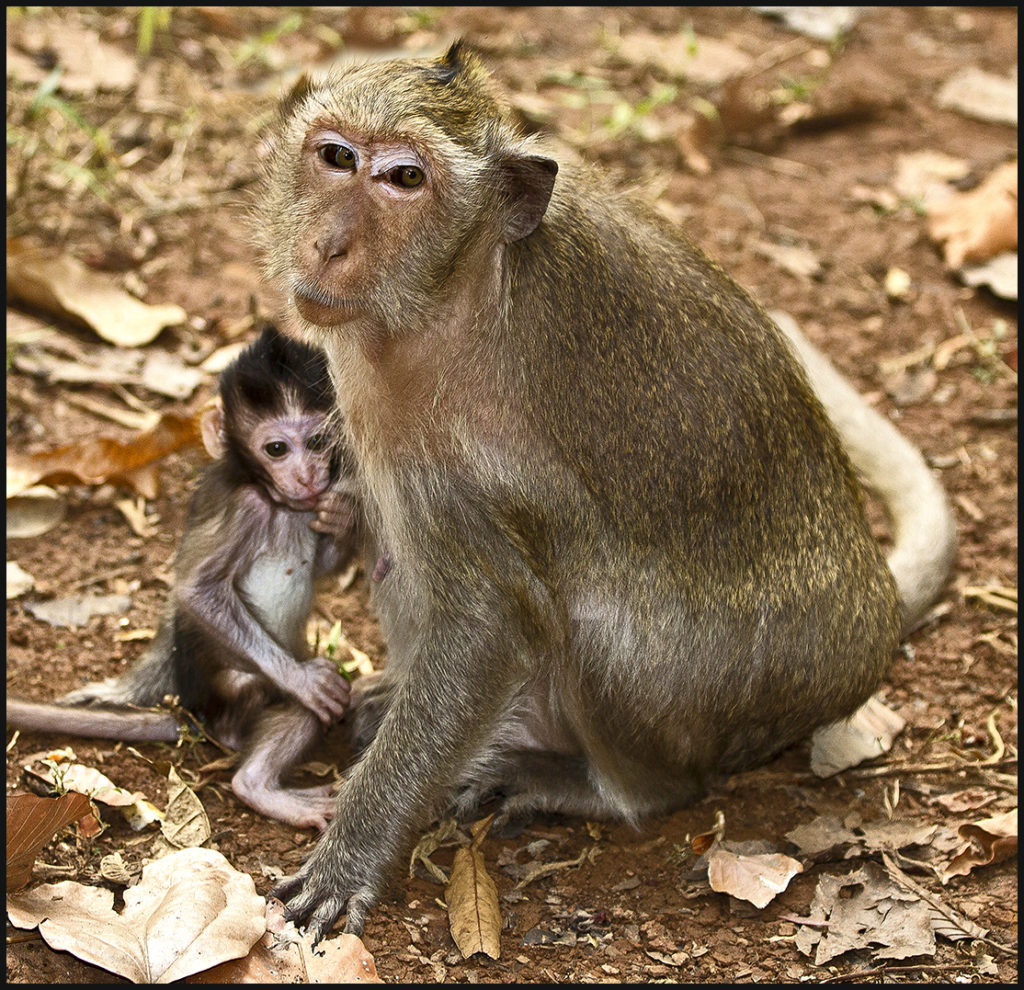
Temple monkeys.
Included inside the walls is the Bayon complex with its multitude of carved faces strangely resembling the king that built it.
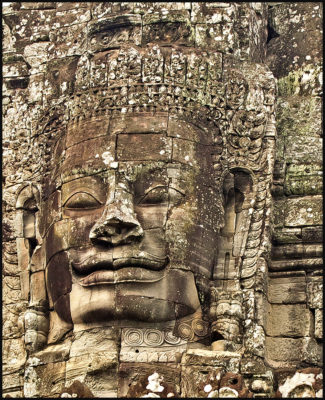
The face found over and over on the Banyon buildings.
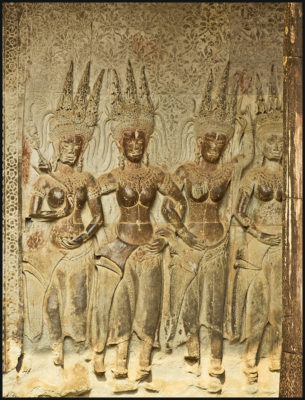
Temple bas-reliefs. You can tell where the people like to touch them.
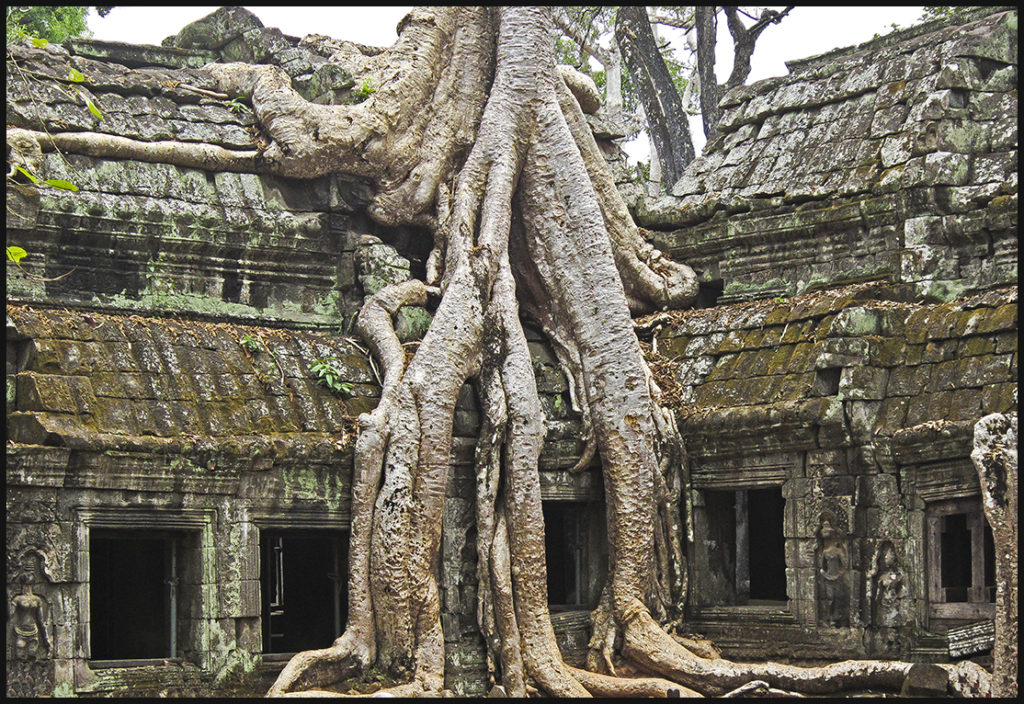
The Ta Prohm area looks much as it did when European adventurers first set eyes on it. Jungle figs and other plants are slowly being removed, and the temples rebuilt by piecing together the fallen stones, but much still remains to be done.
In between the main complex area and the outlying temples rural life goes on.
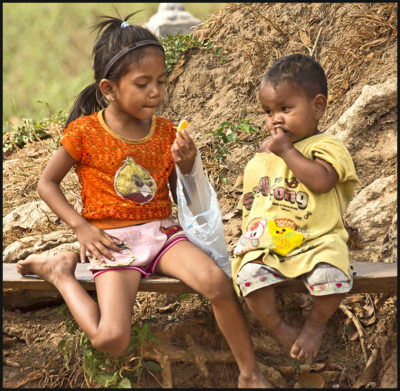
A girl shares food with her little brother.
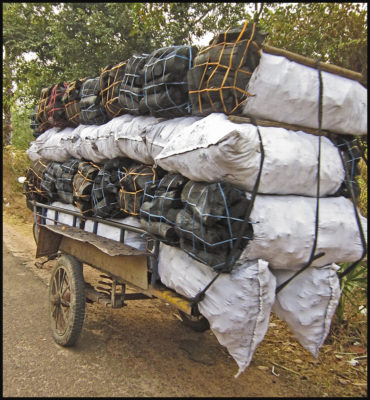
Charcoal sales.
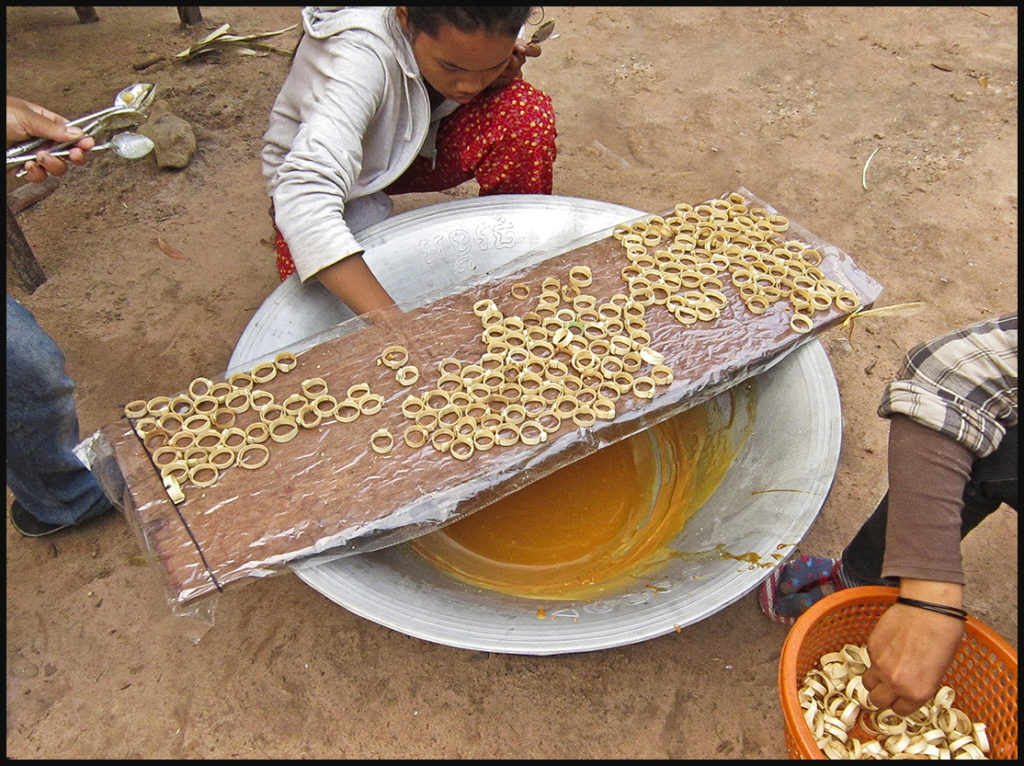
Making palm sugar treats to sell along the roadsides.
The outlying Banteay Srei is called the ladies temple, because of the delicate carvings on pink granite stone. Fewer visitors make it this far, so it’s a quieter complex.
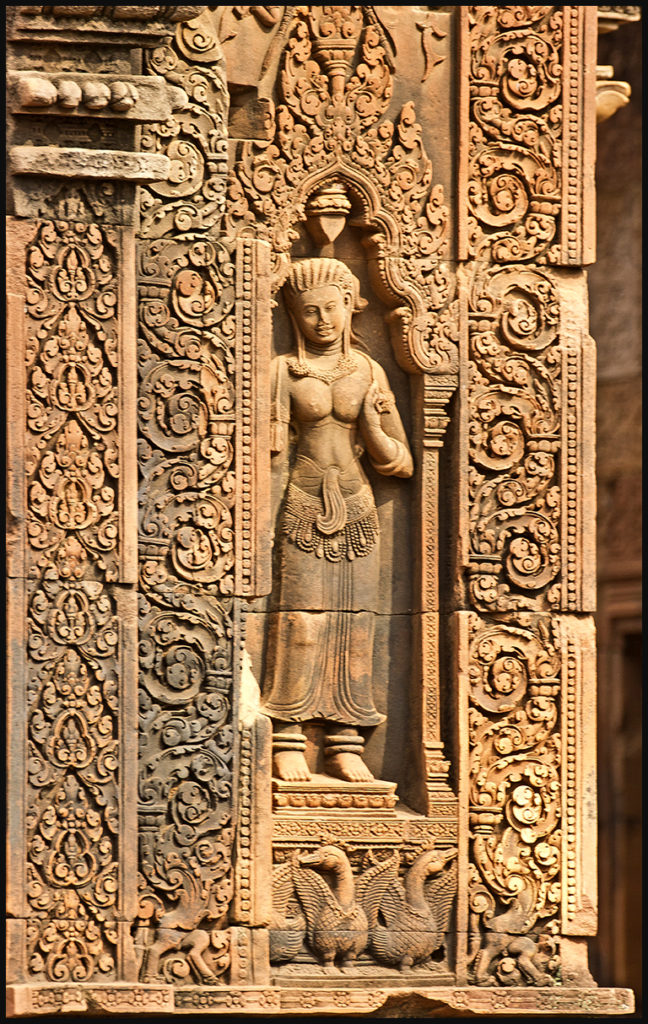
Detail carving at the lady’s palace.
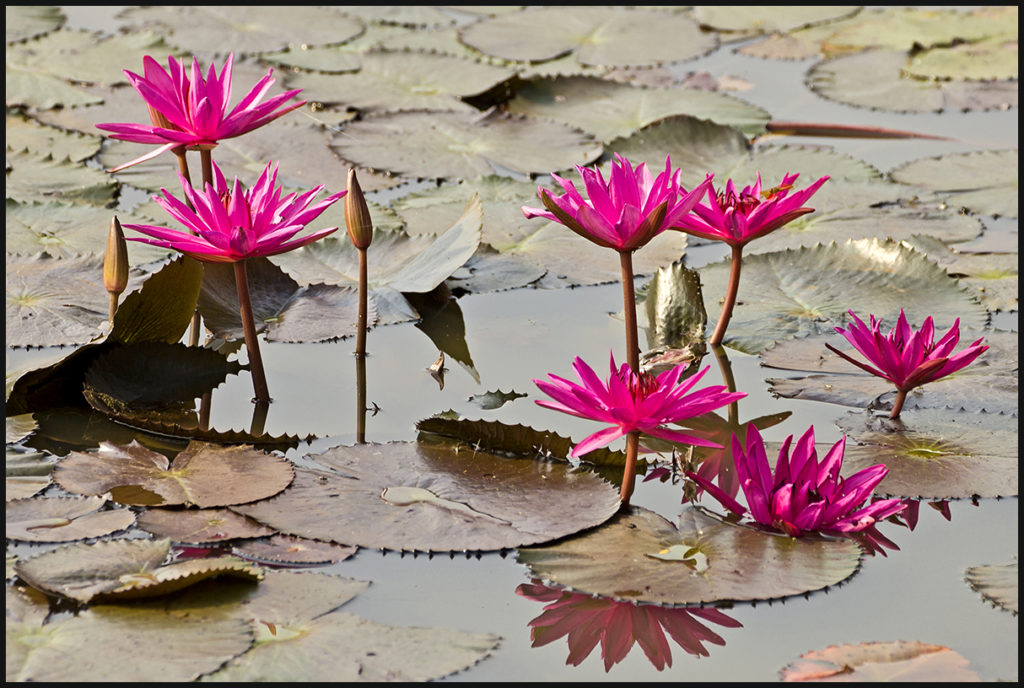
On the grounds of the main complex.
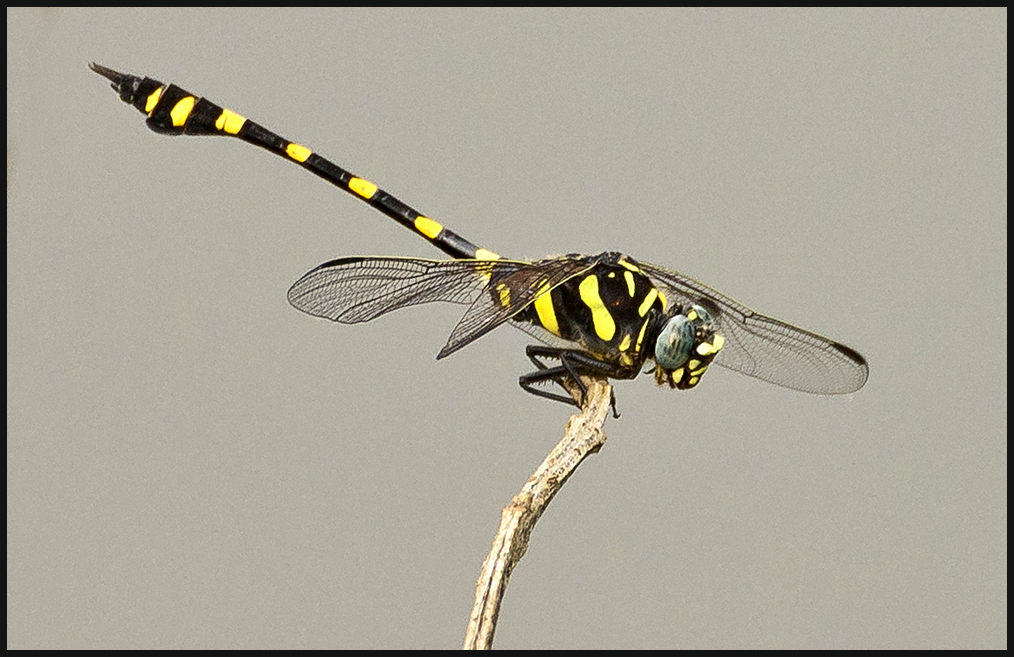
A spectacular resident of the pond.
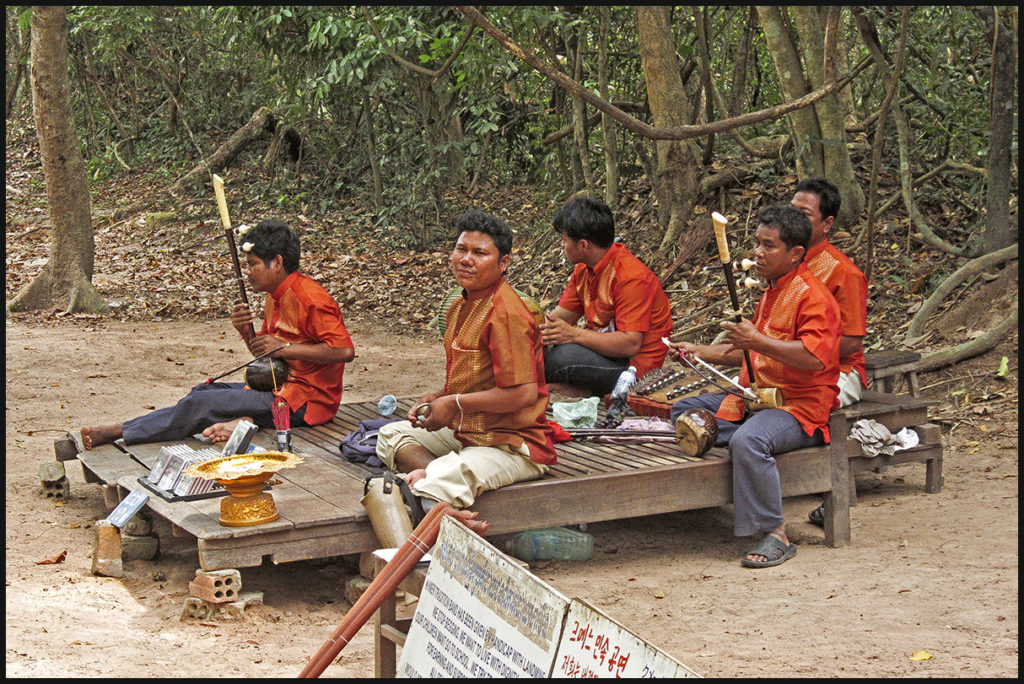
A Cambodian veteran’s band. I doubt there are many benefits for veterans of various Cambodian wars.
Our 2nd stop in Cambodia was The Rainbow Lodge near Koh Kong. Featured in the travel section of the New York Times years before, it sounded so delightful it was a factor in our deciding to visit SE Asia. They have a tranquil spot on the Tatai River, with swimming off the dock, kayaks available for guests and a resident butterfly expert. We brought the Times article with us. As we checked in on March 6, 2013, we noticed the date of the newspaper…March 6, 2011. Oooweeoo.
Lots of birds, insects, and lizards. Gibbons are heard from the opposite bank. Hornbills were honking on our roof.
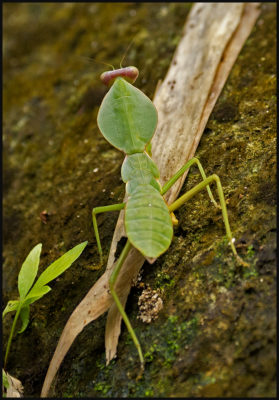
Leaf shaped mantis.
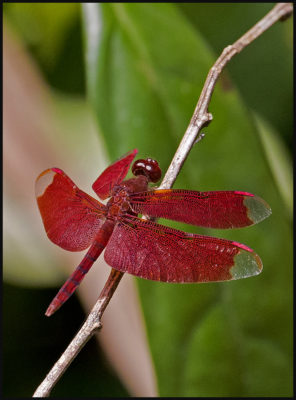
Another gorgeous dragonfly.
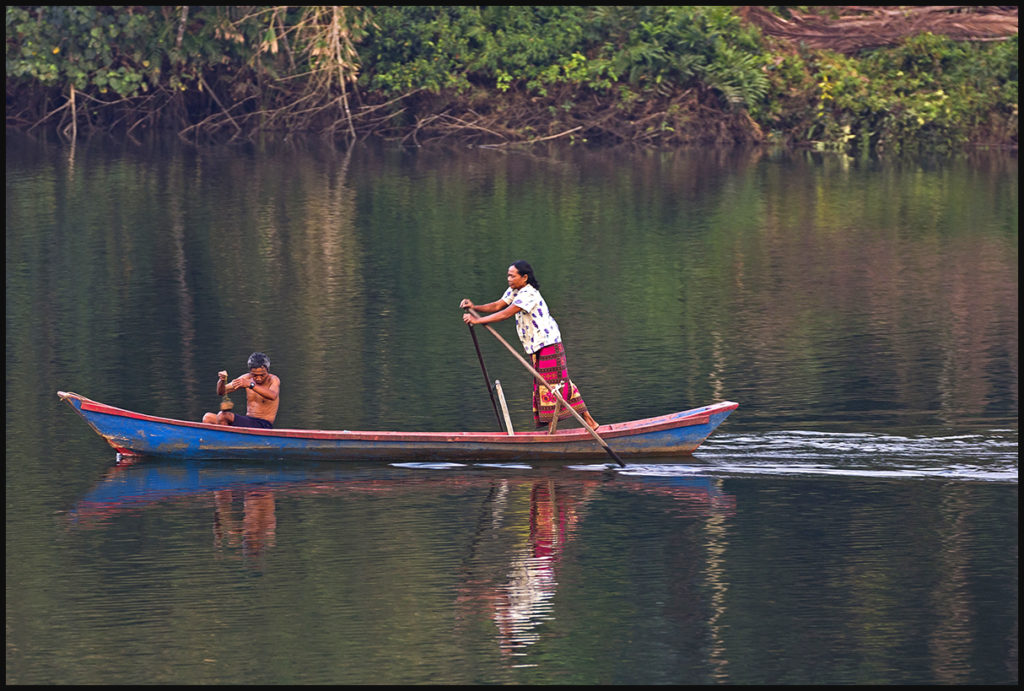
Look who is doing the paddling. Women are hard workers in Cambodia.
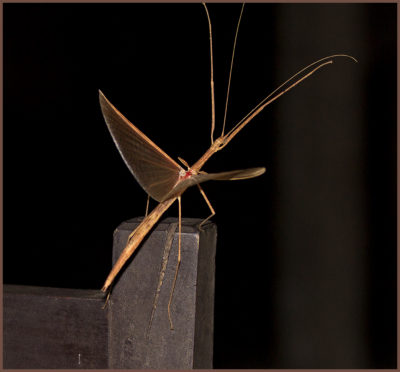
A stick insect nearly landed in Craig’s dinner.
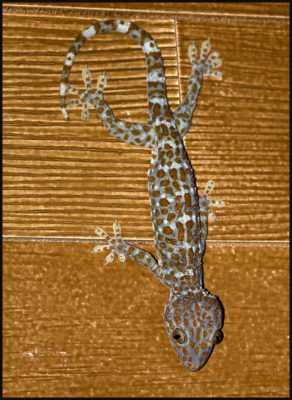
Our first Tokay gecko. These are loud and large.
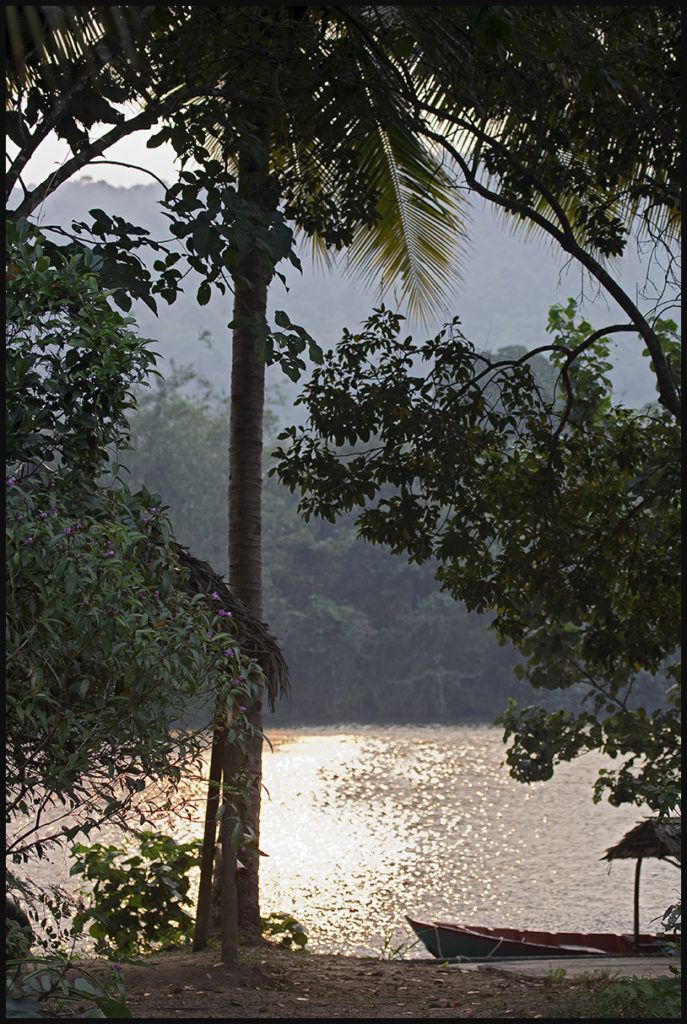
Tatai River in the morning.
Time is running out so we must leave this tranquil spot and get back to Bangkok so we can rent a car and drive south to see more of Thailand. There is a link following if you want to see more of Cambodia.
